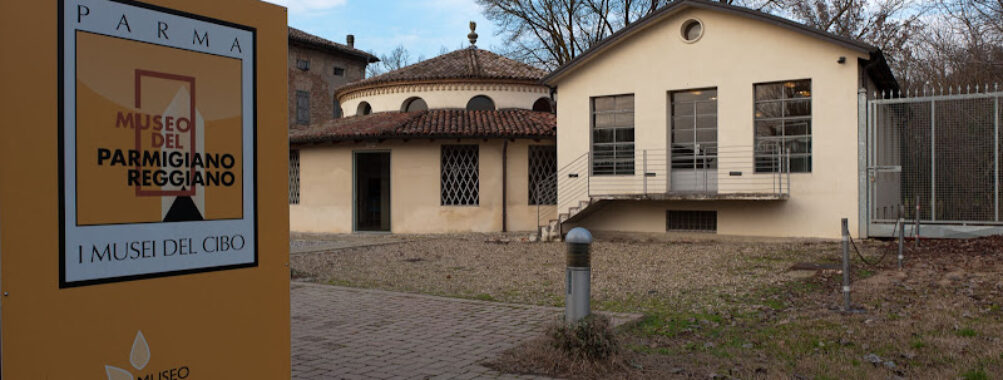
Museum of Parmigiano Reggiano
Table of Contents
Description
The Museum of Parmigiano Reggiano in Corte Castellazzi, Soragna offers a surprisingly intimate deep-dive into one of Italy’s most famous cheeses. It is not a flashy, over-the-top attraction; instead it prefers to teach, show and—best of all—let people taste. The highlight is a series of live performances and demonstrations that illustrate the traditional steps of making Parmigiano Reggiano: from milk handling to curd cutting, from brining to the slow aging process. For travelers who like to understand where their food comes from, this place is quietly excellent.
Opening logistics are practical and slightly old-school: Monday to Friday the museum opens only by appointment (call 340/1939057 to arrange). Weekends can be busier and sometimes run special events, but the safest route is to book ahead. Visitors will find staff are used to scheduling groups, families, and school visits, so arranging a guided experience is straightforward if you plan in advance.
Accessibility is a genuine strong point here. The museum has a wheelchair-accessible entrance, parking and restroom, which makes it easier for travelers with limited mobility to participate. There’s on-site parking, free street parking nearby, and an overall relaxed, small-site layout that keeps walking distances modest. Families also tend to appreciate that there are kid-friendly activities and discounts for children and families—so if you’re traveling with youngsters expect a hands-on, welcoming experience rather than a formal museum vibe.
Practical amenities are minimal but adequate: there is a restroom onsite, but there isn’t a full restaurant. So bring a bottle of water or plan to eat in Soragna after the visit. The museum’s focus is the cheese and its culture, not fine dining—though tasting sessions do give you a solid sampling of Parmigiano Reggiano at different ages, which, honestly, can feel like a mini gourmet feast when paired with good bread and a local wine (if permitted).
What makes this museum stand out, in the writer’s opinion, is the authenticity of the demonstrations and the sense that this is a place run by people who really know the subject. The exhibits include aging wheels, traditional tools, and multimedia panels. But the best moments are live: a cheesemaker demonstrating curd handling, or a tasting where the difference between 12-, 24- and 36-month cheeses becomes shockingly clear. It’s the kind of sensory learning that sticks with you. The author remembers visiting on a rainy afternoon and being surprised by how alive the place felt—warm, slightly salty air, and the soft light on wooden shelves stacked with maturing wheels. It smelled like slow work and patient hands.
Expect a balanced experience: parts are educational, parts are hands-on, and parts are simply meant to be tasted. The museum suits travelers who plan to explore local food culture seriously—those who want to know techniques, terroir influences and the human stories behind the cheese. And yes, there’s a social element. Small-group tastings often spark conversation among visitors about travel tips, regional wines, and which aged wheels they prefer. So if you enjoy swapping travel stories, you’ll find yourself right at home.
Visits typically last between 45 minutes and 90 minutes depending on whether you opt for a guided tasting or a short demo only. For photographers and food writers, there are evocative corners for pictures: the old tools, the brine vats, the aging shelves. Do note that some demonstration areas can be dimly lit (it’s better for cheese aging), so bring a phone with decent low-light capabilities if photos matter to you.
There’s a mix of languages encountered; staff usually conduct tours in Italian, but guides often accommodate English speakers—especially if you request an English-speaking guide when booking. That said, it’s smart to ask at the time of your phone reservation. The museum’s educational materials lean toward Italian, too, so having a basic translation app or a friendly guide to help explain technical terms can enhance the experience.
Reviews over time show a range of reactions, and the museum reflects that: some visitors are blown away by the sensory lessons and personal attention; others expected a larger, more commercial operation. The fair assessment is that it’s a focused, authentic museum best appreciated by people who already like food experiences or who are curious about traditional Italian agriculture and cheese-making culture. If that describes you, this stop will likely be a highlight.
Finally, a few candid notes from someone who’s been: don’t go if you want a quick selfie and out—this place rewards slow curiosity. Bring comfy shoes, a sense of humor (cheese talk can be nerdy, in the best way), and a little patience when arranging visits during weekdays. And if you have dietary restrictions, ask in advance about tasting components; staff are used to accommodating requests but appreciate a heads-up. Overall, the Museum of Parmigiano Reggiano in Corte Castellazzi is a small, charming slice of regional heritage that leaves most visitors both better informed and oddly emotional about cheese. Yes, cheese can do that. Try it and see.
Location
Places to Stay Near Museum of Parmigiano Reggiano
Find and Book a Tour
Explore More Travel Guides
No reviews found! Be the first to review!